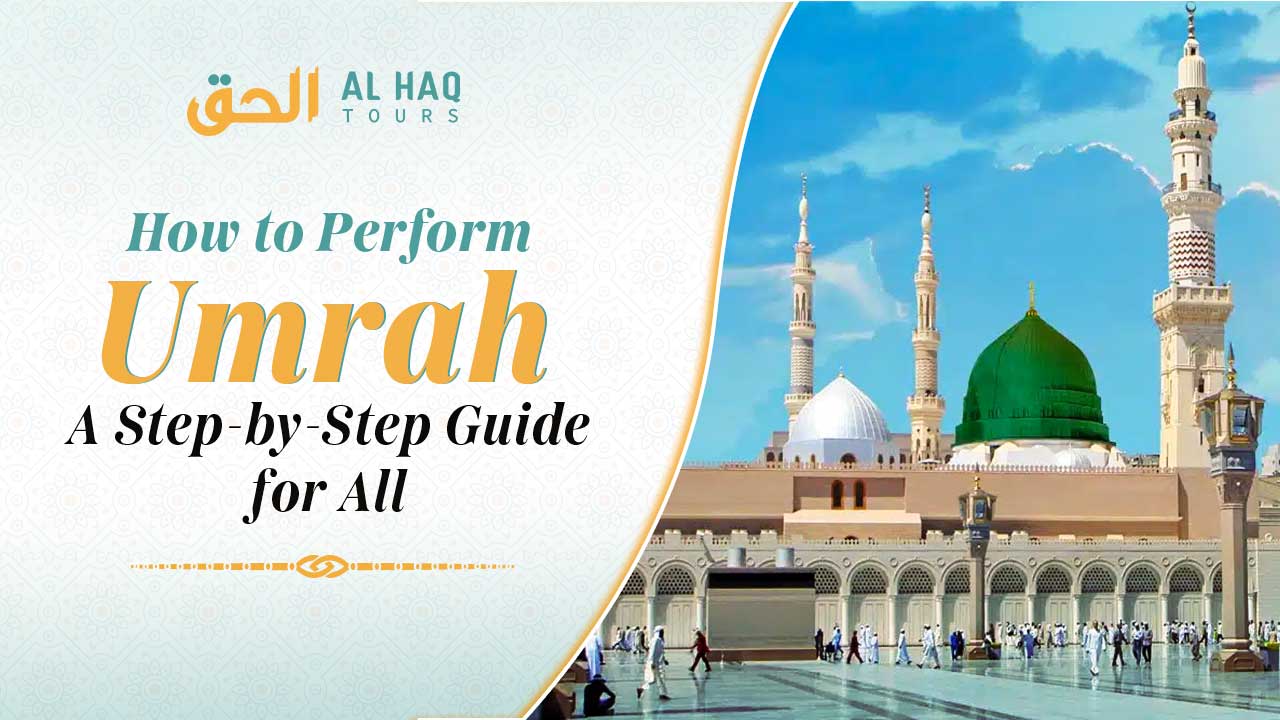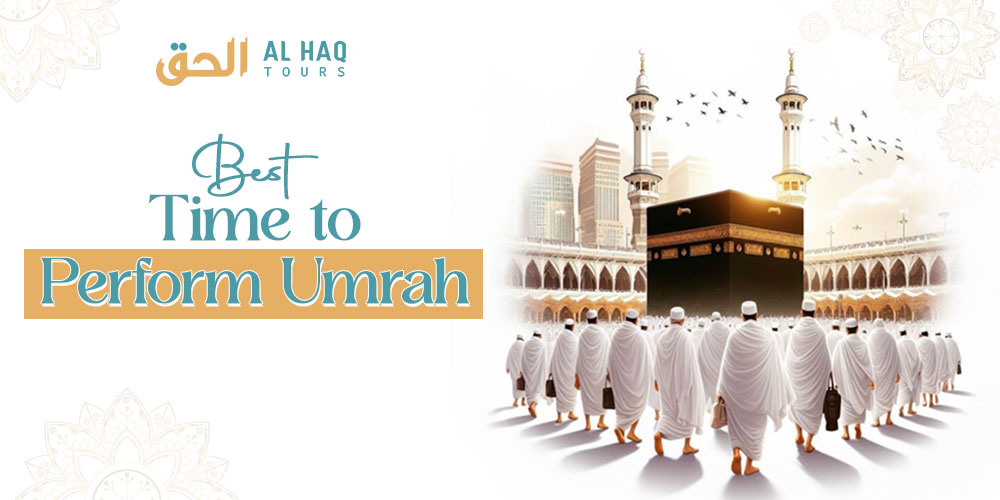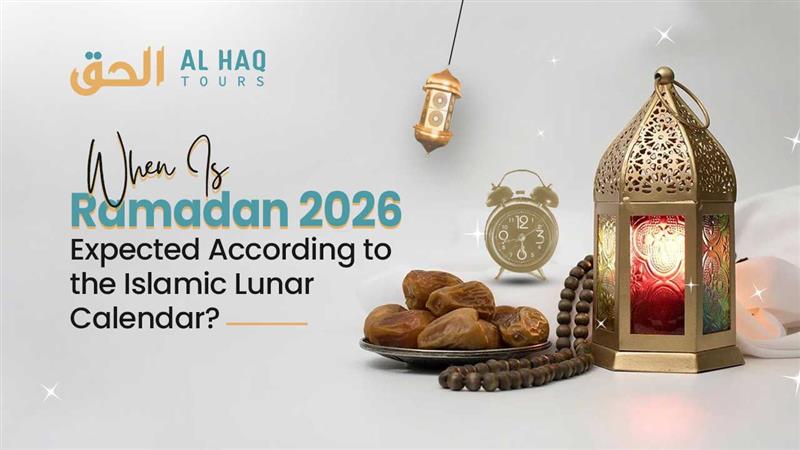Deciding the Best Time for Ramadan Umrah
An Umrah in Ramadan brings rewards equal to Hajj. But which is the best time to plan an Umrah in Ramadan? Whether to perform it in the first, second or third ashra of Ramadan? Well, it all depends on personal interests and intentions. However, any of these days definitely carry a massive reward as compared to any Umrah performed throughout the year. But if you are planning an Umrah in the coming Ramadan, here's a guide of the best time to plan it. It's important to understand the best time to choose the right Ramadan Umrah package later on. So, let's understand ahead.
Umrah in the First 10 Days of Ramadan (First Ashra)
The first ashra of Ramadan is the time to seek mercy of Allah. And performing Umrah during these ten days is the best way to start Ramadan. So, be kind to other fellows during this and also plan charity to get divine mercy. An Umrah in the first ashra of Ramadan has its own benefits. And here's why it could be the best time for you to perform Umrah in Ramadan.
Blessings of beginning Ramadan with Umrah
The whole month of Ramadan is full of divine mercy. However, the beginning of Ramadan specifically brings heavenly generosity. So, performing Umrah in the beginning of Ramadan is a kind act that earns massive reward and blessings. Kindness, charity and patience during these ten days further enhance the quality and reward of the pilgrimage.
Fresh energy and motivation of entering Ramadan
Muslims welcome Ramadan in a way that they have clear worshipping goals and planning. So, the starting days of Ramadan are full of energy and motivation that one needs to perform Umrah rituals. After all, what could be more exciting than welcoming Ramadan in Haramain while performing Umrah? It's a great experience and even easier to adapt to the pilgrimage routine all because of prior planning and preparation both mentally and physically.
The best time to avoid heavy crowds
Pilgrims mostly prefer the last ten days of Ramadan to perform Umrah. It's all because of the massive reward of odd nights and unique experience of I'tikaf. This way, the early days of Ramadan don't see much crowds of pilgrims in Haramain. So, it's the best time to avoid heavy crowds and perform rituals peacefully. Less congestion means no exhaustion and hassle for getting space. After all, it counts as an Umrah in Ramadan which earns a reward equal to Hajj.
Greater availability of accommodations and packages
The greater trend of performing Ramadan Umrah drives the demand for Umrah packages and accommodations. As a result, the prices for basic facilities go crazy during this peak season. Even it becomes difficult to secure any reliable accommodation at the last moment during Ramadan. However, the early ten days are the moderate ones in which the availability of accommodation is relatively easier. Also, the price for Ramadan Umrah deals remain affordable at that time. However, early booking is mandatory to secure the best deal at the best possible rate.
Reduced exhaustion compared to prolonged fasting later
The first ashra of Ramadan is considered as a relaxed time period especially for pilgrims. It's because of a couple of good reasons. First of all, the crowds are manageable in Haramain during these days. It reduces exhaustion and gives time for reflection and relaxation. Secondly, these early days feature the shortest fasting duration than the remaining month. This way, pilgrims can perform Umrah rituals while fasting without getting overwhelmed by hunger or tiredness. This way, they can also plan voluntary prayers and Tawaf during non-fasting hours which are longer.
Umrah in the Middle 10 Days of Ramadan (Second Ashra)
The second ten days of Ramadan are the time to seek forgiveness from Allah. While performing Umrah, these are the best days to repent sins and ask Allah for his forgiveness. Also, it's the time to seek help from Allah to avoid sins in the future. So, the concept of Umrah during middle Ramadan is all about forgiveness and Rahmah. That's why it has its own benefits and spiritual meaning. Here's why you should plan an Umrah during the second ashra of Ramadan.
Settled Fasting Routine
An Umrah during the second ashra of Ramadan experiences the benefits of both the beginning and ending of Ramadan. For example, it's the time to get prepared for the intense Ibadah of the last ashra. Meanwhile, it's the time when pilgrims have adapted the fasting routine and are able to perform rituals better. The fasting duration is still moderate to bear for all ages. In short, the balanced spirituality between initial excitement and the intensity of the last ten days makes these days ideal for pilgrims.
The best time to avoid the crowd of last ten days
The second ashra of Ramadan is the time when Haramain sees increasing crowds of pilgrims. But these are still tolerable than the last ten days of Ramadan. Pilgrims can plan Umrah during these middle days of Ramadan who want to get prepared for I'tikaf or odd nights of third ashra spiritually. This is because it's still easier for pilgrims to find adequate space to perform rituals and take rest or offer prayers. In short, it's a perfectly balanced approach to choose these days of Ramadan for Umrah in terms of budget, comfort and crowds of pilgrims.
Enhanced preparation for upcoming last Ashrah
The second ten days of Ramadan prepare pilgrims for the intensity of last ashra both mentally and spiritually. These days are important for pilgrims in a couple of ways. For example, pilgrims plan their extended journey during the middle and last ashra of Ramadan. This way, they adapt the fasting schedule beforehand and get prepared for making Ibadah during odd nights. However, others plan their Umrah only during the middle of Ramadan to get the reward equals of Ramadan Umrah and motivation for the last ashra. They want to find Layalt Ul Qadr by the comfort of home which is a win-win situation though.
Accommodations are easier to secure compared to third ashra
The second ten days of Ramadan are moderate in terms of travel demand and the availability of essential facilities. It happens because of the greater trend of pilgrims to book Umrah during the last ten days of Ramadan. So, one can still secure quality accommodations in Makkah and Madinah during these days. However, advance booking is mandatory as always which secures your preferred travel dates and hotel choices. Otherwise, nothing remains reliable as well as affordable at the last moment.
Umrah in the Last 10 Days of Ramadan (Third Ashra)
The moderate travel demand of pilgrims during the middle of Ramadan drives a moderate increase in the package prices. The same works for the availability of Ramadan Umrah. It's the time when the package prices begin to rise. Thus one can still make this deal affordable through early bookings and particular discount offers. It's the best time to get prepared for the last ashra without spending a lot on the basics and still get rewards equal to Hajj.
Umrah in last ten days
The last ten days of Ramadan mark the freedom of believers from hellfire. It's the climax of Ramadan and thus is of great importance. Besides the fact that Umrah during these last days is highly rewarding like Hajj, it also features unique Ibadah acts like no other. Though it has its own challenges, here's why you should still plan Umrah during the last ashra of Ramadan.
Connection with Laylat-ul-Qadr
The odd nights of the whole third ashra of Ramadan are of great importance in terms of both Ibadah and reward. It's because of finding Layalt Ul Qadr which is better than thousand months of worship. And no one can literally imagine the reward of finding Layalt Ul Qadr in Haramain that pilgrims can only experience in the last ten days. So, one should definitely plan Umrah during these last days to maximize his reward for each Ibadah.
Tradition of I’tikaf alongside Umrah
I'tikaf is another sacred act of Ibadah associated with the last ashra of Ramadan. It even enhances the experience of finding Layalt Ul Qadr and its reward as well. So, those planning I'tikaf in Haramain to have this once-in-a-lifetime experience should definitely go for it. After all, these last ten days combine the reward of Umrah rituals, Layalt Ul Qadr and I'tikaf in one place which is beyond any calculations.
Sense of completing Ramadan with devotion
An Umrah during the third ashra means ending Ramadan with full devotion. It's also a great way to join Arabians with their Eid celebrations in Haramain. Ending taraweeh prayer, Umrah rituals and I'tikaf all are unique to experience in Haramain which enhances the chance of forgiveness. Meanwhile, it's also the time when Allah answers the prayers of pilgrims the most and fills their hearts with true Emann.
Peak crowd levels in Haram
The greater reward and importance of third ashra drives massive travel demand during these days of Ramadan. This is the reason Haramain sees crowds of pilgrims similar to Hajj days. So, it's a challenge both physically and mentally to focus on Ibadah while navigating endless crowds. It requires a lot of stamina and patience to complete all the rituals while also taking care of health. However, all these increased hardships further elevate the quality of pilgrimage and thus the reward as well. However, you shouldn't plan your Umrah during these days with seniors or children.
Highest package prices
The highest travel demand automatically limits the supply of quality accommodations and Ramadan Umrah services during the last ten days. So, Islamic travel agencies used to charge much extra to balance the demand and supply challenge. In this case, early bookings are mandatory in the first place. Not just this, you should have enough budget to meet the inflated prices for each essential service. Remember that even it's impossible to find any reliable Ramadan Umrah deal for third ashra at double price at the last moment. In short, ample budget limit, early booking and proper planning all makes an Umrah in the last ten days of Ramadan possible.
Choosing the right time for Umrah in Ramadan - Quick Guide
|
Factors |
Early Days (1-10) |
Middle Days (11-20) |
Last 10 Days (21-30) |
|
Spiritual Significance |
High rewards, fresh spiritual energy |
Continued spiritual momentum |
Peak spiritual period, Laylat al-Qadr |
|
Crowd Levels |
Moderate to Low |
Moderate |
Very High |
|
Accommodation Costs |
Lower |
Moderate |
Highest |
|
Accommodation Availability |
Good |
Fair |
Limited |
|
Prayer Space Availability |
Ample |
Adequate |
Limited |
|
Recommended For |
Budget travelers, first-timers |
Balanced experience seekers |
Spiritual seekers, experienced pilgrims |
|
I'tikaf Opportunity |
Not applicable |
Not applicable |
Possible in last 10 days |
|
Group Coordination |
Easier |
Moderate |
Difficult |
Who should perform umrah on which days of Ramadan?
|
Pilgrim Type |
Recommended Period |
Primary Reason |
|
First-time pilgrims |
Early Days (1-10) |
Better comfort and learning experience |
|
Budget travelers |
Early Days (1-10) |
Lower costs across all categories |
|
Elderly/Health concerns |
Early Days (1-10) |
Less crowded, more comfortable |
|
Families with children |
Early Days (1-10) |
Easier management and comfort |
|
Experienced pilgrims |
Last 10 Days (21-30) |
Maximum spiritual benefit |
|
Spiritual seekers |
Last 10 Days (21-30) |
Laylat al-Qadr and peak atmosphere |
|
Flexible travelers |
Middle Days (11-20) |
Balanced experience |
|
Group travelers |
Early to Middle Days |
Easier coordination |
Final Words
In conclusion, the first, second and third ashra of Ramadan all are the best times to perform Umrah. Some of these days are highly rewarding while others are more peaceful. The same works for the availability of Ramadan Umrah deals and their which tends to increase as the travel demand increases. In the end, no matter which days you have chosen for your Umrah in Ramadan, it's completely up to you. But ensure early bookings and proper planning to maximize your reward anyway.










